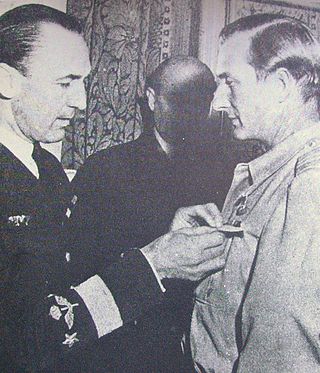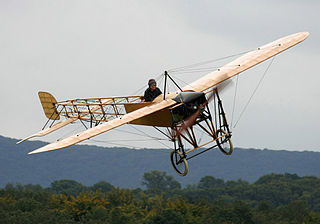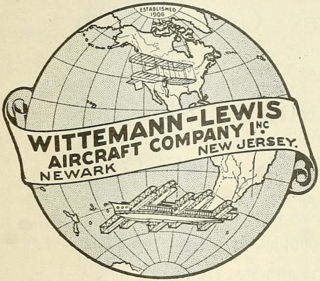Hugo Sundstedt | |
|---|---|
 | |
| Born | July 12, 1886 Örebro, Sweden |
| Died | July 8, 1966 (aged 79) |
| Occupation | Aviator |
Hugo Sundstedt (12 July 1886 - 8 July 1966) was a Swedish-American aviation pioneer.
Hugo Sundstedt | |
|---|---|
 | |
| Born | July 12, 1886 Örebro, Sweden |
| Died | July 8, 1966 (aged 79) |
| Occupation | Aviator |
Hugo Sundstedt (12 July 1886 - 8 July 1966) was a Swedish-American aviation pioneer.
Hugo Sundstedt was born Hugo Leonardsson on 12 July 1886 in Örebro, the fourth child to an unmarried woman. The family lived in cramped conditions, and in 1892, he was auctioned off to a shoe dealer for 75 Swedish krona (SEK). In 1897, he was adopted by the businessman Olof Sundstedt. Now he had the opportunity to study, but since the study results were not good, he applied to the Swedish Navy in 1901 as a cadet. After leaving the fleet in 1904, he got a job in an office in Örebro. Because he did not like being behind a desk, he applied for the merchant navy in October 1905, but he disembarked in Cardiff on 19 February 1906. He returned to Sweden, and in 1908 he got a job as a taxi driver in Stockholm, an occupation he held until 1911. [1] [2]
In Stockholm, he got to know the car dealer Carl Cederström, who graduated as an aviator in France in 1910; this aroused Sundstedt's interest. He started helping Cederström with the aircraft for free, with the idea of gaining his own experience of flying, in order to finally obtain a flight certificate himself. He first flew on 1 June 1912 at Ljungbyhed with Cederström's aircraft, a Blériot XI named Nordstjernan (The North Star). With some wealthy businessmen from Örebro as sponsors, he managed to buy Nordstjernan from Cederström. During one of his longer flights, on 21 June 1912, he broke the Scandinavian altitude record, when he reached an altitude of 1,800 metres during a two-and-a-half-hour flight over Malmen. [1]
He also became a pioneer in freight flying, as he transported bundles of newspapers by air. The intention was that he would undergo the certificate tests in July 1912, but an accident occurred when a young woman was fatally hit by his aircraft propeller, and that led to an investigation, so the tests were cancelled. After the investigation showed that he was innocent, the tests were carried out at the beginning of August 1912. He was thus the first Swede to receive his entire flight education in Sweden, and to a large extent completely on his own without an instructor. He was awarded Swedish aviator diploma number 9 from the Swedish Aeronautical Society (SAS) on 2 August 1912. [1]
Sundstedt was very active as a pilot in 1912 and 1913, and he participated in several air shows, and made flights around the country. On 10 August 1913, he completed the first flight between Malmö and Stockholm in 14 hours and 35 minutes. In the autumn of 1913, he sold the Nordstjernan aircraft to Enoch Thulin. [1]
During the winter of 1913/1914, he travelled to France to buy a Farman aircraft, but during the flight test in April 1914 he crashed the aircraft, with the result that he had to stay in hospital for a few weeks, before he could return to Sweden with his new aircraft. He started the journey home in July 1914 from Buc in France, and crash landed on a grass field in Malmö. The aircraft was taken to Södertelge Verkstäder, where it was to be repaired. [1]
When World War I broke out on 1 August 1914, Sundstedt offered the aircraft to the Swedish Navy. Both the aircraft and Sundstedt entered military service. He was appointed lieutenant and was posted to an air reconnaissance unit in Karlskrona. He was active as a marine pilot until 1916, when he resigned as captain. In the autumn of 1916, he left Sweden to work as a pilot in France, but since he failed to get a job offer, he continued his journey to the United States with the French steamship L'Espagnole. He landed in the port of New York on New Year's Day 1917. In the United States, he worked with the construction of seaplanes, floats, transport aircraft and wing construction. [1]

In 1919, after studying meteorology and the winds between America and Europe for a few years, he decided to design the Sundstedt-Hannevig Seaplane (aka Sunrise). With that aircraft, the idea was that he and the pilot Paul Micelli would carry out a Transatlantic flight, with financial support from the banker Christopher Hannevig. While the aircraft was being moved from its construction site, it suffered damage, and the intended departure had to be postponed due to repairs. Lack of funds then put a stop to further attempts for Sundstedt to cross the Atlantic by aircraft. [1] [3]
During the 1920s, Sundstedt worked for a number of different aircraft manufacturers, mainly with float-equipped aircraft. In 1924, he formed the Speed Boat Company. He formed his own consulting company Sundstedt Aircraft Corporation in 1934. The company designed a number of seaplanes for other aircraft manufacturers. He died on 8 July 1966 in Liberty, New York. His surviving writings and letters from 1919 to 1951 are preserved at the Wichita State University Special Archives. [4] [5]

A seaplane is a powered fixed-wing aircraft capable of taking off and landing (alighting) on water. Seaplanes are usually divided into two categories based on their technological characteristics: floatplanes and flying boats; the latter are generally far larger and can carry far more. Seaplanes that can also take off and land on airfields are in a subclass called amphibious aircraft, or amphibians. Seaplanes were sometimes called hydroplanes, but currently this term applies instead to motor-powered watercraft that use the technique of hydrodynamic lift to skim the surface of water when running at speed.

The Royal Naval Air Service (RNAS) was the air arm of the Royal Navy, under the direction of the Admiralty's Air Department, and existed formally from 1 July 1914 to 1 April 1918, when it was merged with the British Army's Royal Flying Corps to form the Royal Air Force (RAF), the world's first independent air force.
This is a list of aviation-related events from 1911:

This is a list of aviation-related events from 1912:
This is a list of aviation-related events from 1913:
This is a list of aviation-related events from 1916:

Count Carl Gustaf Ericsson von Rosen was a Swedish pioneer aviator, humanitarian, and mercenary pilot. He flew relief missions in a number of conflicts as well as combat missions for Finland and Biafra. His flights for the Biafran Air Force were notable for using the small Malmö MFI-9 in a ground attack role.
An aviator badge is an insignia used in most of the world's militaries to designate those who have received training and qualification in military aviation. Also known as a pilot's badge, or pilot wings, the aviator badge was first conceived to recognize the training that military aviators receive, as well as provide a means to outwardly differentiate between military pilots and the “foot soldiers” of the regular ground forces.

Gustav Wilhelm Hamel was a pioneer British aviator. He was prominent in the early history of aviation in Britain, and in particular that of Hendon airfield, where Claude Graham-White was energetically developing and promoting flying.
This is a list of aviation-related events during the 19th century :

Glenn Luther Martin was an early American aviation pioneer. He designed and built his own aircraft and was an active pilot, as well as an aviation record-holder. He founded an aircraft company in 1912 which through several mergers amalgamated into what is today known as Lockheed Martin.

Air Commodore Charles Rumney Samson, was a British naval aviation pioneer. He was one of the first four officers selected for pilot training by the Royal Navy and was the first person to fly an aircraft from a moving ship. He also commanded the first British armoured vehicles used in combat. Transferring to the Royal Air Force on its creation in 1918, Samson held command of several groups in the immediate post-war period and the 1920s.

The Imperial Russian Air Service was an air force founded in 1912 for Imperial Russia. The Air Service operated for five years and only saw combat in World War I before being reorganized and renamed in 1917 following the Russian Revolution.

The Blériot XI is a French aircraft from the pioneer era of aviation. The first example was used by Louis Blériot to make the first flight across the English Channel in a heavier-than-air aircraft, on 25 July 1909. This is one of the most famous accomplishments of the pioneer era of aviation, and not only won Blériot a lasting place in history but also assured the future of his aircraft manufacturing business. The event caused a major reappraisal of the importance of aviation; the English newspaper The Daily Express led its story of the flight with the headline "Britain is no longer an Island".

The Early Birds of Aviation is an organization devoted to the history of early pilots. The organization was started in 1928 and accepted a membership of 598 pioneering aviators.

Marcel-Georges Brindejonc des Moulinais was a French aviator best known for long-distance flights, including crossing the Baltic Sea. He also flew as an exhibition and racing pilot. He flew reconnaissance missions during the battle of the Marne.
The Naval Air Service was the air arm of the Hellenic Navy from 1915 to 1930.

Major Frank Widenham Goodden was a pioneering British aviator who served as chief test pilot for the Royal Aircraft Factory during the First World War.

The Wittemann-Lewis Aircraft Company was an American aircraft manufacturer between 1906 and 1923. It was notable for building two large aircraft, the Sundstedt-Hannevig transatlantic seaplane with a 100-foot wingspan and the NBL-1 Barling Bomber a six-engined triplane with a 120-foot wingspan.

Ernest François Guillaux, better known by his adopted name Maurice Guillaux, was a French aviator who spent seven months in Australia in 1914. On 16–18 July 1914, he flew Australia's first air mail and air freight flight, from Melbourne to Sydney. During his time in Australia he also gave many aerial displays, was the first person to fly a seaplane in Australia, and was an early user of Ham Common, now RAAF Base Richmond.